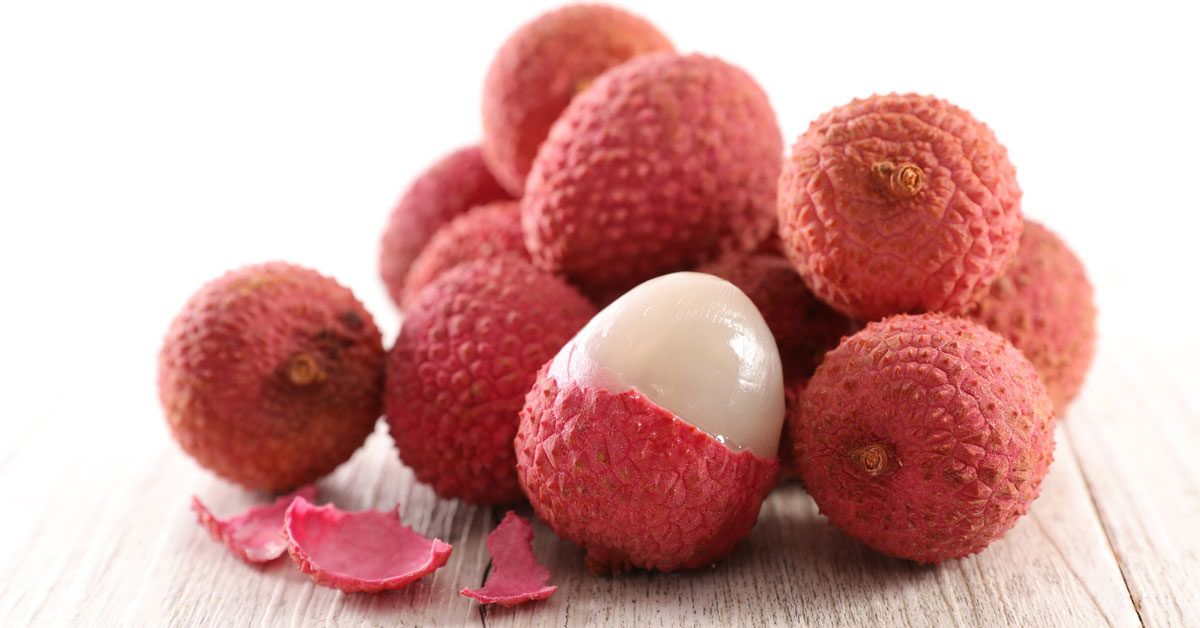Often mistaken for one another, lychees and rambutans are two distinct tropical fruits that share a striking resemblance. Both fruits boast a vibrant red exterior, translucent white flesh, and a sweet, refreshing flavor, making them popular treats worldwide. However, upon closer inspection, subtle differences emerge, setting these tropical gems apart.
Appearance: A Tale of Two Textures

At first glance, lychees and rambutans appear strikingly similar. Both fruits are roughly the size of a golf ball, with a round or slightly oval shape. Their skin is a vibrant shade of red, ranging from deep crimson to a pinkish hue. However, the texture of their skin distinguishes them. Lychees feature a bumpy, leathery exterior, while rambutans are adorned with soft, pliable spines that resemble miniature hairs. These spines, ranging from neon green to orange, give the fruit a unique fuzzy appearance, earning it the nickname “hairy lychee.”

Flesh and Flavor: A Symphony of Sweetness
Upon peeling away their outer layers, lychees and rambutans reveal a hidden treasure: translucent white flesh segmented into several lobes. This flesh is the heart of their culinary appeal, offering a delightful combination of sweetness and subtle nuances.
Lychees are renowned for their sweet, floral flavor, often described as reminiscent of roses or grapes. Their flesh is slightly crisp and juicy, with a delicate texture that melts in the mouth. Rambutans, on the other hand, possess a richer, creamier flavor, often tinged with a hint of tartness. Their flesh is softer and more opaque than lychees, with a texture similar to grapes or longan.
Nutritional Profile: A Bounty of Benefits
Both lychees and rambutans are excellent sources of essential vitamins and minerals, making them a nutritious addition to a balanced diet. They are rich in vitamin C, a potent antioxidant that boosts the immune system and promotes collagen production. Additionally, they contain potassium, a mineral essential for regulating blood pressure and muscle function.
Lychees are also a good source of fiber, which aids digestion and promotes gut health. Rambutans, on the other hand, are higher in manganese, a mineral that supports bone health and blood sugar control.
Culinary Versatility: A World of Possibilities
Beyond their refreshing flavor and nutritional value, lychees and rambutans offer culinary versatility. Both fruits can be enjoyed fresh, peeled, and eaten out of hand. Their sweetness makes them ideal for adding to salads, fruit platters, and smoothies. Additionally, they can be preserved in syrup, incorporated into desserts, or transformed into jams and jellies.
Lychees are often featured in Asian cuisine, where they are used in savory dishes, such as stir-fries and curries, adding a burst of sweetness and floral essence. Rambutans, on the other hand, are more commonly consumed fresh or preserved, often served as a refreshing snack or dessert.
Conclusion: A Tale of Two Tropical Delights
Lychees and rambutans, though often confused, are distinct tropical fruits that offer unique flavors, textures, and nutritional benefits. Lychees captivate with their delicate floral sweetness and crisp texture, while rambutans tantalize with their rich, creamy flavor and soft, juicy flesh. Both fruits are versatile culinary ingredients, adding a touch of tropical elegance to a variety of dishes. So, the next time you encounter these exotic treats, savor their unique qualities and embark on a delightful tropical adventure.